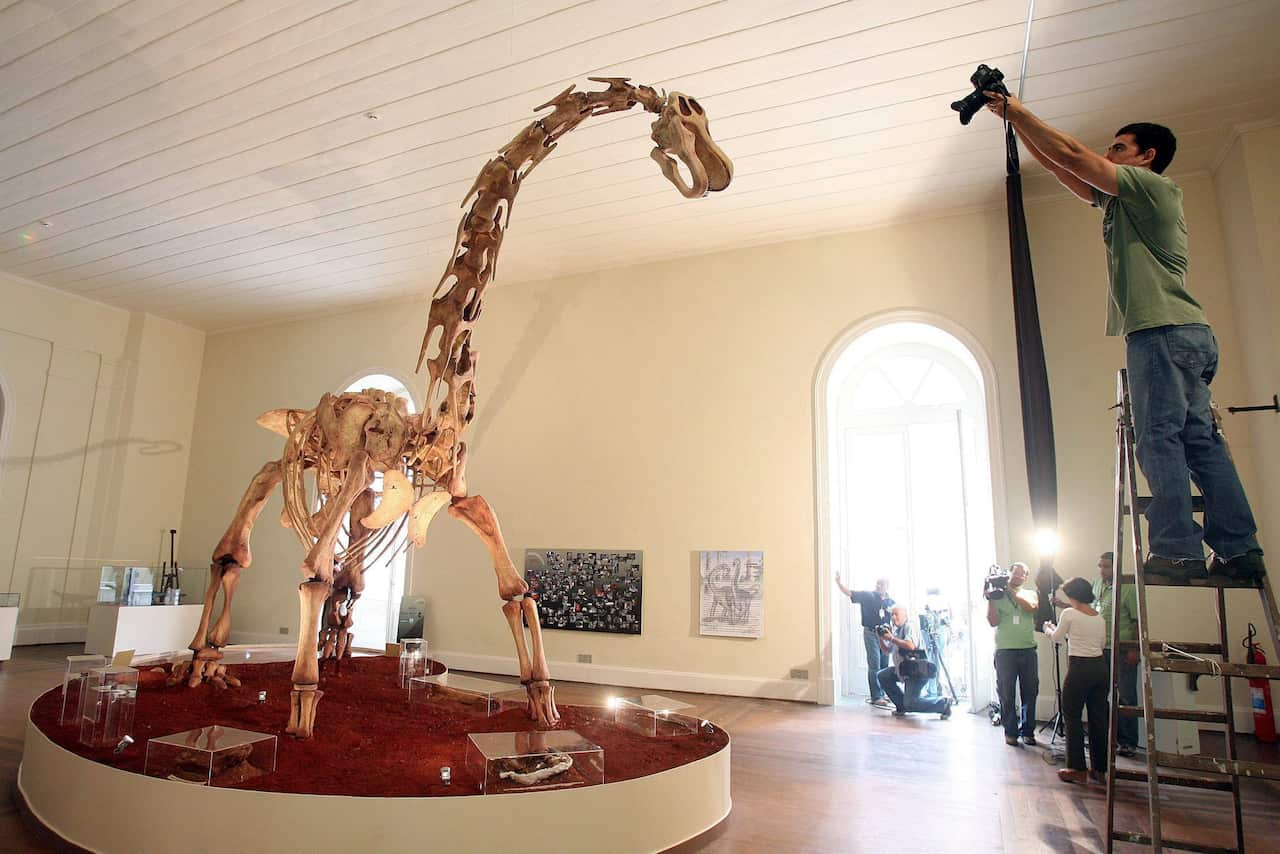Brazil on Monday mourned the loss of the "first Brazilian," Luzia, after the 12,000-year-old fossil was destroyed in a raging fire that ripped through Rio de Janeiro's treasured National Museum.
The jewel in the crown of the museum's collection of 20 million valuable pieces, Luzia was the first human fossil found in Brazil, in the southwestern Minas Gerais state in 1970.
"Luzia is a priceless loss for everyone interested in civilization," Paulo Knauss, director at Brazil's national history museum, told AFP.
Using her skull, researchers at Britain's University of Manchester had managed to produce a digital image of her face, which was used as the base for a sculpture displayed in the museum that went up in smoke on Sunday night.
"Luzia died in the fire," moaned Katia Bogea, president of the National Institute of Historic and Artistic Heritage, as quoted by Estado de S.Paulo newspaper.
She said the tragedy had been coming, blaming major budget cuts for the irreparable cultural loss.
Knauss said the lack of funding was due to "a crisis of values" that had been blighting the country for many years.
"It's an old problem but we have to stop talking about the past and think about the future... to inverse a process that shames us in the face of future generations," he said.
Dinosaur skeleton, meteorite also lost
Considered the most important natural history museum in Latin America, the National Museum, which celebrated its bicentenary in June, was particularly renowned for its paleontology collections.
The former imperial palace housed a dinosaur skeleton also found in Minas Gerais as well as 26,000 fossils of extinct species, including the famed saber-toothed tiger. It also housed the largest meteorite discovered in Brazil, which was named "Bendego" and weighed 5.3 tons.
It also housed the largest meteorite discovered in Brazil, which was named "Bendego" and weighed 5.3 tons.

FILE: A Maxakalisaurus Topai dinosaur reconstruction on display at the National Museum of Rio de Janeiro in 2006. Source: EFE
Pieces covering a period of nearly four centuries - from the arrival of the Portuguese in the 1500s until the declaration of the first Brazilian republic in 1889 - were also stored there.
"This is a tragic day for Brazil," Temer said in a statement. "Two hundred years of work and research and knowledge are lost."
'Culture is grieving'
"There will be little or nothing left of the palace and the exhibits," Culture Minister Sergio Sa Leitao tweeted.
A deputy director at the museum, Luiz Fernando Dias Duarte, voiced "profound discouragement and immense anger" as the treasured institution burned, accusing Brazilian authorities of a "lack of attention."
He said the museum, a former palace that was once the official residence of the Portuguese royal family, had always lacked necessary support.
The fire comes as campaigning for October's critical presidential vote gets underway, one of the most uncertain Brazilian elections in decades.
Senator Lindbergh Farias of the country's leftist Workers' Party blamed the institution's lack of funding on spending cuts ordered by the government.

